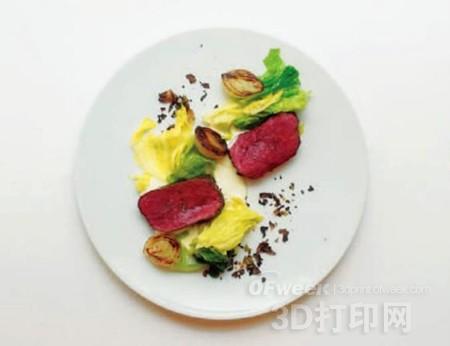"Nihon Keizai Shimbun" reported that the Japanese catering industry is undergoing a new revolution, and emerging technologies such as robots and 3D printing have entered, and they have begun to affect the lives of Japanese people.
The following is the full text of the report:
By 2040, the population of Japan will be reduced to 107.3 million people, 20 million less than today. For the food and catering industry, a reduction in population means a shortage of labor and a reduction in potential customers. Robotics, artificial intelligence, and other cutting-edge technologies can find answers to many questions.
Not long ago, the guests walked into the restaurant and found that they were not the living receptionists, but the robots.
If you go to the Henn-na-Hotel in Japan, you will see this scene. The restaurant is located near the Huis Ten Bosch amusement park in Sasebo, Nagasaki Prefecture, Japan. There, the robot receptionist is responsible for collecting the checkout.
The restaurant opened in July 2015 and introduced a customized version of the Actroid robot, developed by Tokyo Kokoro. Kokoro provides interactive robots for many exhibition halls and museums.
Standing a little farther, you will mistake the hotel receptionist as a real person. Her hair and skin are fake, her expression is natural, her movements are smooth, and she can be so realistic, mainly because the inside of the robot transports compressed air through pipes. It also supports speech recognition and pre-programmed session modes for simple conversations with humans. Through facial recognition, the robot can distinguish between new and old customers with high accuracy.
Hideaki Sakurai, manager of robotics at Kokoro, said: "By programming a typical conversational model, robots can provide basic customer service to restaurants."

XYZ food printer
There is also a technology that has entered the Japanese restaurant, which is 3D printing.
The XYZ food printer was developed by XYZ Corporation of Taiwan. Users only need to put flour, chocolate, butter and other materials into the printer's consumable box and input the corresponding data of the specific food. The printer can use the 1-4 mm nozzle through the layer. The layered pattern prints a three-dimensional shape of the food. The whole process takes only a few minutes. It should be noted that the raw materials placed must be viscous liquid in order to be shaped by the nozzle. You can also modify the printer's data settings at any time, change the size and shape of the food, and make batches.
In the demonstration, the printer used 22 minutes to print the dough into animal-shaped food and then baked it in the oven.
In Taiwan, the price of the printer is $1,799, and XYZ has not yet decided when to launch the product in Japan. Shops and restaurants can use new equipment to attract customers. To make 3D printers popular, printing time must be shortened first.

Chef's French cuisine based on Watson's advice
For restaurant owners and chefs, the biggest challenge may be to constantly introduce new dishes and keep customers coming back. Watson, IBM's artificial intelligence computer system, tried to solve this problem. The Watson website collects 9000 recipes from the popular American food magazine Bon Appetit. When users enter some keywords, Watson uses the information to invent new recipes. Users can enter some keywords to choose cooking methods, such as "quick" or "cooking".
New freezing technology
Another area is the hot spot for innovation, which is freezing technology. There is a small company in Yokohama, Japan. Its name is Tekunikan. The new-generation freezer developed by the company is not only sold in Japan, but also exported overseas.
The traditional freezer uses cold air to cool the ice food, but its freezing speed is too slow, and the water in the food will become large, sharp ice crystals. Food is easily damaged by ice crystals and is also prone to loss of water when thawed.
Tekunikan's approach is different, it puts the food in a special liquid that is thermally conductive and then frozen. This speed of freezing is greatly accelerated, and the freezing is completed before the water becomes large sharp ice crystals. Ultimately, this method of freezing can make food more fresh and delicious.
According to reports, Tekunikan's freezer is priced at tens of thousands of dollars and has been used by 1,400 Japanese companies. Tekunikan also sells freezer in 35 other countries. So far, buyers are mainly large food manufacturers and restaurant chains, and future guests and small restaurants will have the opportunity to use them.
Hair Rejuvenation Laser Helmet,Hair repair device,Anti-hair Loss Laser Hair Growth Cap,Laser Medical Hair Loss Laser Cap
Shenzhen Guangyang Zhongkang Technology Co., Ltd , https://www.lighttherapymachine.com